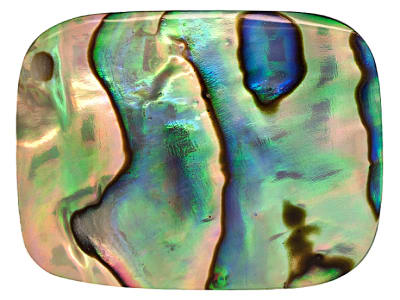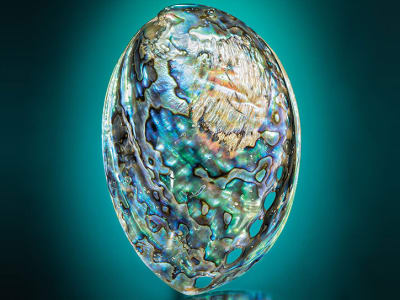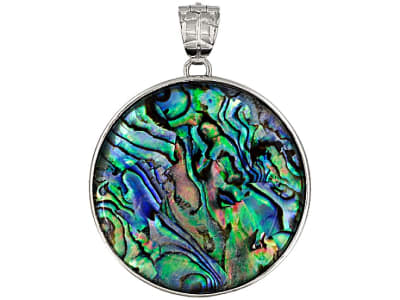Abalone belongs to the phylum Mollusca and the class Gastropida (snails). Abalone has been highly prized as a food source for the Pacific Rim cultures and the meat is considered a delicacy. The Māori people of New Zealand call it Pāua. The shells and pearls from the animal are brightly colored and highly iridescent. The shells have been used for ornamentation and decoration from the earliest times. The name abalone is derived from the Spanish word abulón. The Spanish referred to this marine mollusk as oreja de mar which means sea ear.
General Information
LWUV: Variable
Abalone Shell Colors
-
 Bi-color
Bi-color -
 Black
Black -
 Blue
Blue -
 Gray
Gray -
 Green
Green -
 Multi-color
Multi-color
Alternate Names
Paua Shell
Countries of Origin
Argentina; Japan; Philippines; United States of America; Thailand; India; Spain; New Zealand; Korea (the Republic of); Unknown; China; Brazil; Mexico; South Africa; Australia; France; Indonesia
History
The Native American tribes of North America have been using abalone shells for decorative items for over 10,000 years. The shells were fashioned as circular coins called “whello” that were used as a currency for trade. The “whello” have been found in Native American archaeological sites in Arizona, Colorado, New Mexico, and Utah. In 1870 a button factory was established in San Francisco to create buttons out of the shells that were distributed throughout the United States and Europe. Abalone shells are especially popular as a souvenir from the areas in California where the shells are harvested and made into silver jewelry.
Care
Abalone and abalone pearl are relatively soft, so they're often placed in protective settings. Remember that these are organic gems and should be treated with extra care. Do not use an ultrasonic or steam cleaner or use chemicals. Store this gemstone in a soft fabric away from other gems to ensure its protection.
More About Abalone Shell
The folkloric benefits attributed to abalone apply to both the pearls and the shells (in most instances). Some believe that abalone may be beneficial in difficult, emotionally charged situations because the purported properties include a calming effect and the creation of a stable atmosphere. Some believe the abalone pearl brings a sense of calming and relaxation because it comes from the ocean. To those who believe in the metaphysical, abalone is credited with the ability to do a great deal. Our favorite legend says that holding a piece of abalone will help you appreciate the beauty around you. Wearing a piece of lovely abalone jewelry is certainly a way to add beauty to your world!


